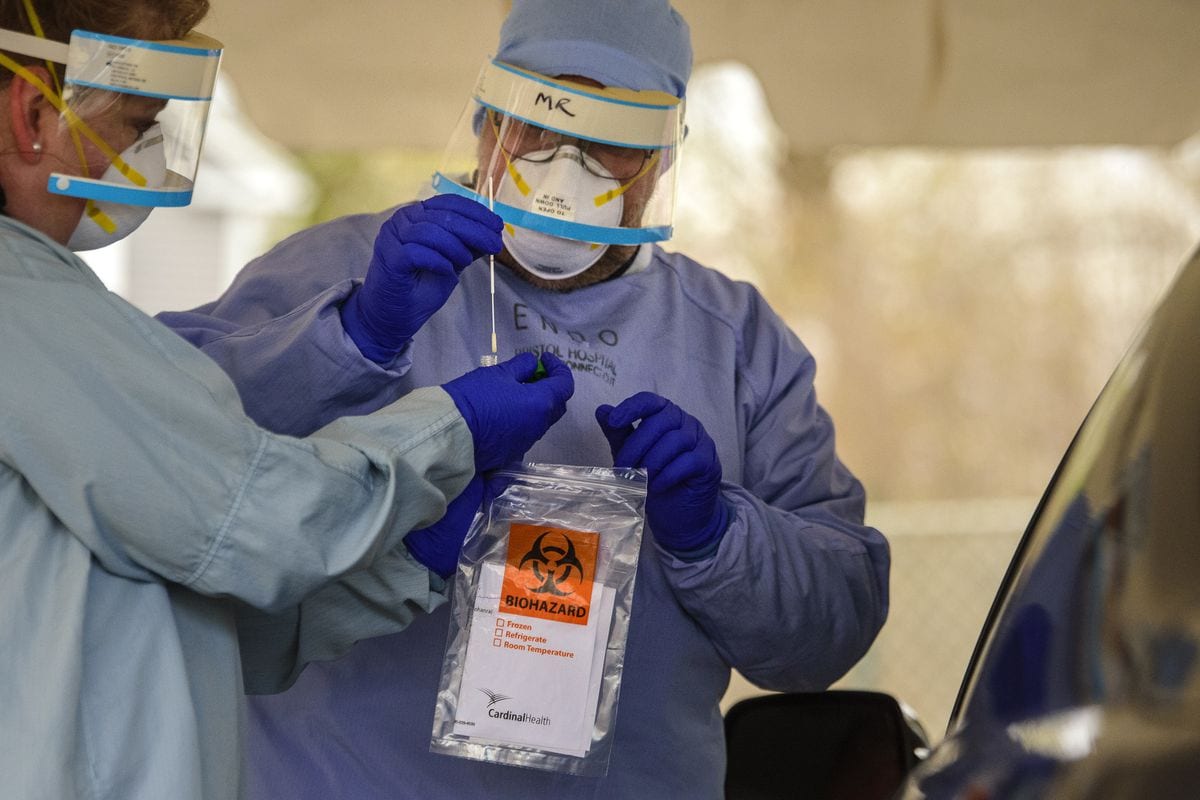
Miami-Dade County has averaged 1,016 new daily COVID-19 cases over the past seven days, just one of several signs the virus is experiencing a resurgence in the region.
The South Florida tri-county area — which includes Miami-Dade, Broward and Palm Beach counties — has seen COVID-19 cases increasing for several straight weeks.
From Nov. 6-12, the number of new daily cases in Miami-Dade varied from 398 on Nov. 9 to 1,843 on Nov. 12. But the one-week average crossed four digits for the first time since mid-August, when the region was coming down off a serious spike which sent hospitalizations and deaths surging.
Case numbers can increase as testing increases. If officials test more people, they’ll ultimately uncover more cases.
But the rise in South Florida is not driven solely by new testing. The share of tests coming back positive is also increasing in Miami-Dade, Broward and Palm Beach counties.
The positivity rate increased from 6.4% from Oct. 30-Nov. 5 in Miami-Dade to 7.9% this past week. Broward saw a rise from 6.1% to 7.3% over the same span. In Palm Beach, that number rose from 6.7% to 7.7%.
Since Gov. Ron DeSantis announced South Florida would move to Phase Three on Sept. 25, the tri-county area has seen a rise in the share of cases coming back positive. That’s a near sure sign the virus is spreading at a faster rate. The question for officials is: how high will that number go?
Hospitalizations and deaths still remain low. But hospitalizations and deaths are lagging indicators, meaning if cases continue to go up, those numbers could begin to surge right around the new year.
Flu season is also a concern. If COVID-19 cases spread as fast as they did this summer — after the state tried to reopen the first time — hospitals can quickly become overwhelmed. Health care workers may face issues even if the numbers don’t reach those heights due to the added strain of flu season.
As of yet, data shows the virus has not approached a peak in this third wave.
Here are some of the weekly numbers for the previous three weeks throughout the South Florida tri-county area:
Miami-Dade
— Oct. 23-29: 13 newly-reported hospitalizations per day, 7 newly-reported deaths per day, 639 new confirmed cases per day, 4.6% positivity rate
— Oct. 30-Nov. 5: 12 newly-reported hospitalizations per day, 4 newly-reported deaths per day, 882 new confirmed cases per day, 6.4% positivity rate
— Nov. 6-12: 11 newly-reported hospitalizations per day, 5 newly-reported deaths per day, 1,016 new confirmed cases per day, 7.9% positivity rate
Broward
— Oct. 23-29: 13 newly-reported hospitalizations per day, 0 newly-reported deaths per day, 476 new confirmed cases per day, 5.2% positivity rate
— Oct. 30-Nov. 5: 15 newly-reported hospitalizations per day, 3 newly-reported deaths per day, 516 new confirmed cases per day, 6.1% positivity rate
— Nov. 6-12: 18 newly-reported hospitalizations per day, 5 newly-reported deaths per day, 534 new confirmed cases per day, 7.3% positivity rate
Palm Beach
— Oct. 23-29: 14 newly-reported hospitalizations per day, 4 newly-reported deaths per day, 310 new confirmed cases per day, 5.1% positivity rate
— Oct. 30-Nov. 5: 11 newly-reported hospitalizations per day, 3 newly-reported deaths per day, 344 new confirmed cases per day, 6.7% positivity rate
— Nov. 6-12: 10 newly-reported hospitalizations per day, 2 newly-reported deaths per day, 387 new confirmed cases per day, 7.7% positivity rate
___
Editor’s note on methodology: The Florida Department of Health releases new data every morning around 10:45 a.m. The total number reported in those daily reports include the previous day’s totals as well as the most up to date data as of about 9:30 a.m.
Florida Politics uses the report-over-report increase to document the number of new cases each day because it represents the most up-to-date data available. Some of the more specific data, including positivity rates and demographics, considers a different data set that includes only cases reported the previous day.
This is important to note because the DOH report lists different daily totals than our methodology to show day-over-day trends. Their numbers do not include non-residents who tested positive in the state and they only include single-day data, therefore some data in the DOH report may appear lower than what we report.
Our methodology was established based on careful consideration among our editorial staff to capture both the most recent and accurate trends.
